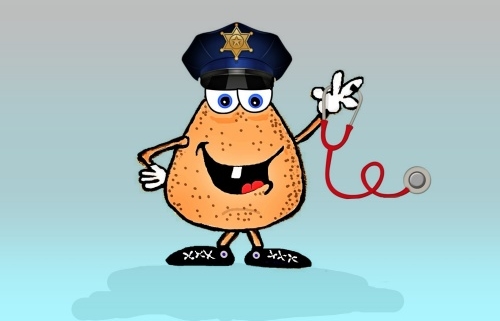Police officers, especially those working patrol assignments, are typically the first officers to respond to emergency situations. Not only are they called to scenes involving criminal activities, they are often the first responders to show up at scenes involving medical emergencies. Therefore, it makes sense that officers would possess, at minimum, a basic knowledge of first aid procedures.
When I attended the police academy part of the curriculum was a mandatory 40-hour First Responder certification course (not to be confused with the broadly-used, generic term “first responder,” meaning police, fire, and EMS personnel). To avoid confusion the name “First Responder” was eventually changed to “Emergency Medical Responder” or “EMR.”
The First Responder certification course offered training in the skills needed to provide emergency medical care, such as patient assessment and care, diagnostic signs, and how to treat life threatening emergencies, such as severe bleeding, seizures, choking, broken bones, and more.
In addition to the First Responder/Emergency Medical Responder certification course, each recruit was required to complete and pass an Adult CPR and Pediatric CPR certification course. The only exemption to the training was to have current CPR certification and a current certification at the First Responder level or higher (EMT, Paramedic, etc.). At the time, I was an EMT and a CPR instructor for both the American Heart Association and Red Cross. I taught taught CPR at law enforcement and jail training academies, and at the Virginia Department of Corrections training academy. I also taught CPR at local hospitals and churches, rescue squads and ambulance services, and fire departments, etc.
Unfortunately, in many areas, if not most, First Responder/Emergency Medical Responder in-service training is not required. Therefore, without refresher courses many of those lifesaving skills and bits of valuable knowledge eventually fade from the minds of officers (If you don’t use it you lose it!).
Fortunately, help has arrived! Yes, the Comprehensive Trauma Kit is just what the doctor ordered. It’s a medical toolbox packed with an assortment of medical supplies designed to help police officers address critical emergencies. The kit is also available for businesses, or anywhere it may be needed.
Some law enforcement agencies in the U.S. have assigned these trauma kits to their officers/deputies.
Each kit contains:
- First aid supplies
- A built-in integrated tablet that includes the Mobilize Rescue app
- The Mobilize Rescue app guides users with on-screen real-time step-by-step instructions
- Clearly organized and color-coded supplies with alpha-numeric labels that correspond to the instructions in the app
- OSHA-compliant medical supplies
- The ability to create a time-stamped summary of actions to share with EMS
Trauma Supplies
4 | SOF-T Wide tourniquet
2 | QuikClot bleeding control dressing
2 | 6″ flat emergency trauma dressing
2 | Hyfin chest seal
2 | Water-Jel universal burn dressing
2 | triangular bandage
2 | 4.5″ sterile conforming stretch gauze
4 | 5″ x 9″ sterile combine ABD pads
2 | 10″ x 30″ sterile multi-trauma dressing
1 | 36″ SAM emergency splint
2 | 4″ elastic wrap bandage
1 | 4″ x 5″ cold compress
1 | adhesive tape 2.5 yd
Medical Supplies
1 | CPR face shield with bite block
1 | 81mg chewable aspirin (bottle)
1 | 12mg dissolvable allergy tablets (box)
1 | 15mg Insta-Glucose
2 | emergency space Mylar blanket
1 | portable charger and charging cord
1 | USB charging cube
1 | inspection card
12 | proof seals
2 | bag with biohazard markings
1 | trauma shears
10 | nitrile gloves
1 | user manual and inventory card
OSHA-Compliant First Aid Supplies
2 | eye pads
16 | adhesive bandages (assorted sizes)
10 | burn cream packets
10 | triple antibiotic ointment packets
10 | antiseptic wipes
1 | tweezers
10 | hand sanitizer packets
1 | eye wash
1 | first aid guide
To view the kit, its contents, and how it can be utilized during a medical emergency, please click on the video below.


